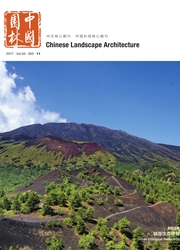

 中文摘要:
中文摘要:
中国哲学为传统风景园林提供了泛文化基础,两者在意象上是异质同构、合而为一的,谓之同象。在西方知识论的语境下,中国传统园林难以解读,但回到中国传统形而上的"道"上去释义,传统园林却是可读的,谓之同意。当前,对中国风景园林在精神性、本土性上的反思使传统哲学的园林重返成为必需,通过对"大象无形"与"意在笔先"的探索,希望能够回溯中国传统风景园林的哲学基础和由形入神的建构方式,从而可为当代的风景园林规划设计提供本土的、原生的和在地的思考。
 英文摘要:
英文摘要:
Chinese philosophy provides a pan-cultural basis for traditional landscape architecture, and the both in imagery represent heterogeneous isomorphism, integration, and is defined as common visualization. Chinese traditional landscape architecture might be obscure in the context of Western epistemology. On the contrary, traditional landscape architecture can be readable and sensible through tracing Chinese traditional metaphysics, which made the method "Road" to interpret, called uniform ideology. At present, it is necessary to reform the landscaping-philosophy value based on the introspection of spiritual and native thinking. With exploring "the great image seems formless" and "conception before initiation" consideration, the paper intends to construct a tectonic approach, which is recalled to the philosophy foundation and "by the form converting to consciousness" of the landscape architecture, in addition, provides a native, primordial and local meditation for contemporary landscape architecture planning and design.
 同期刊论文项目
同期刊论文项目
 同项目期刊论文
同项目期刊论文
 期刊信息
期刊信息
